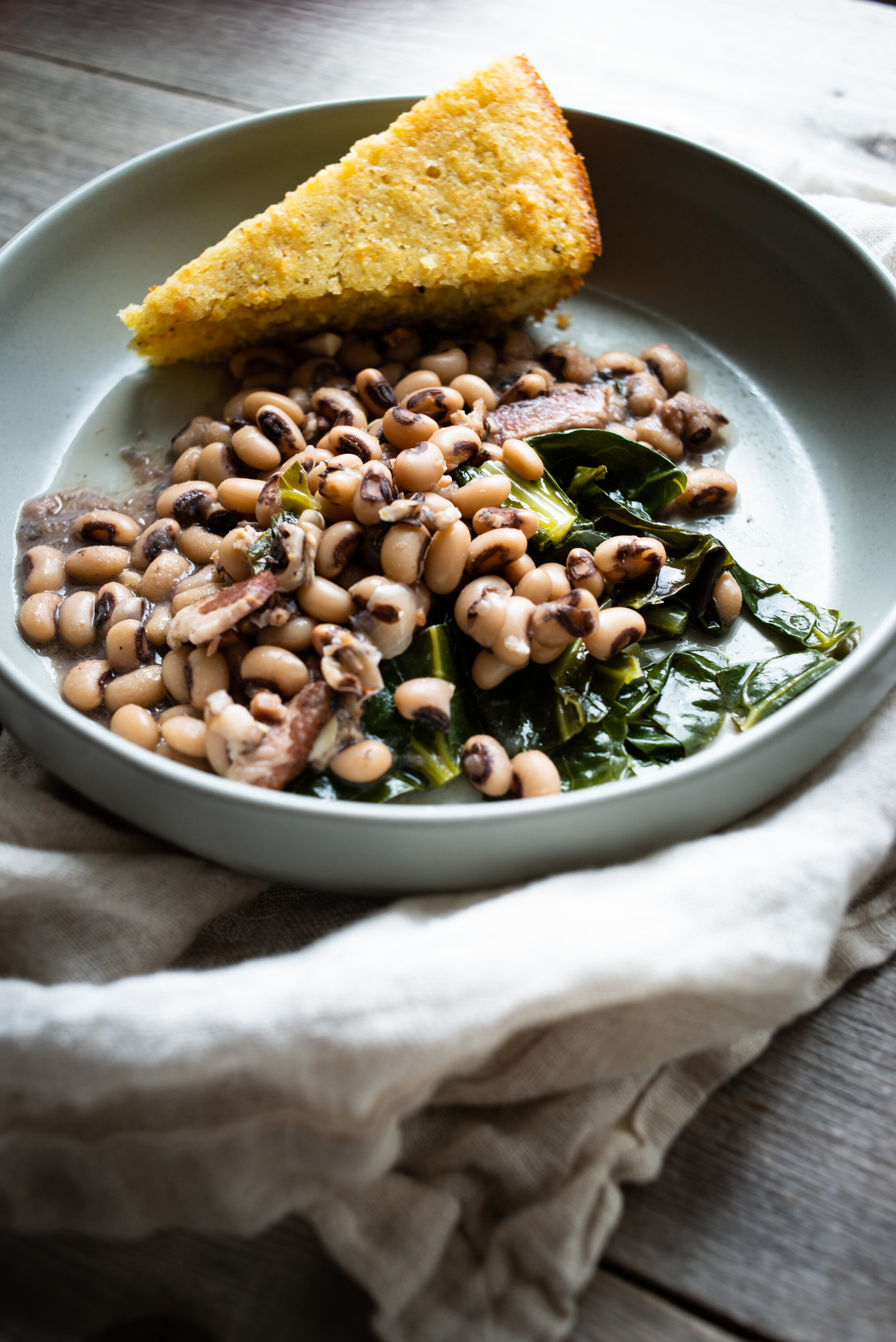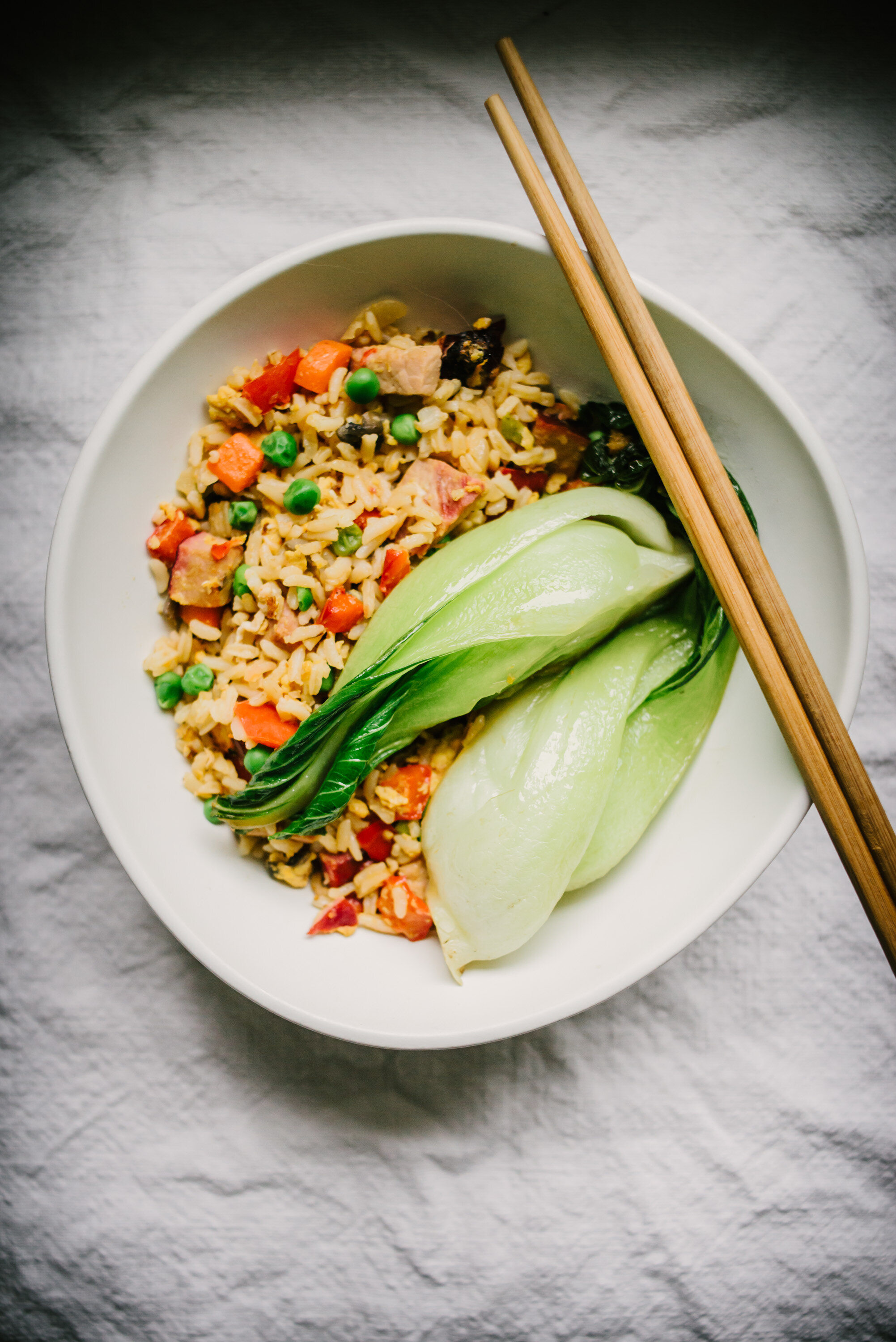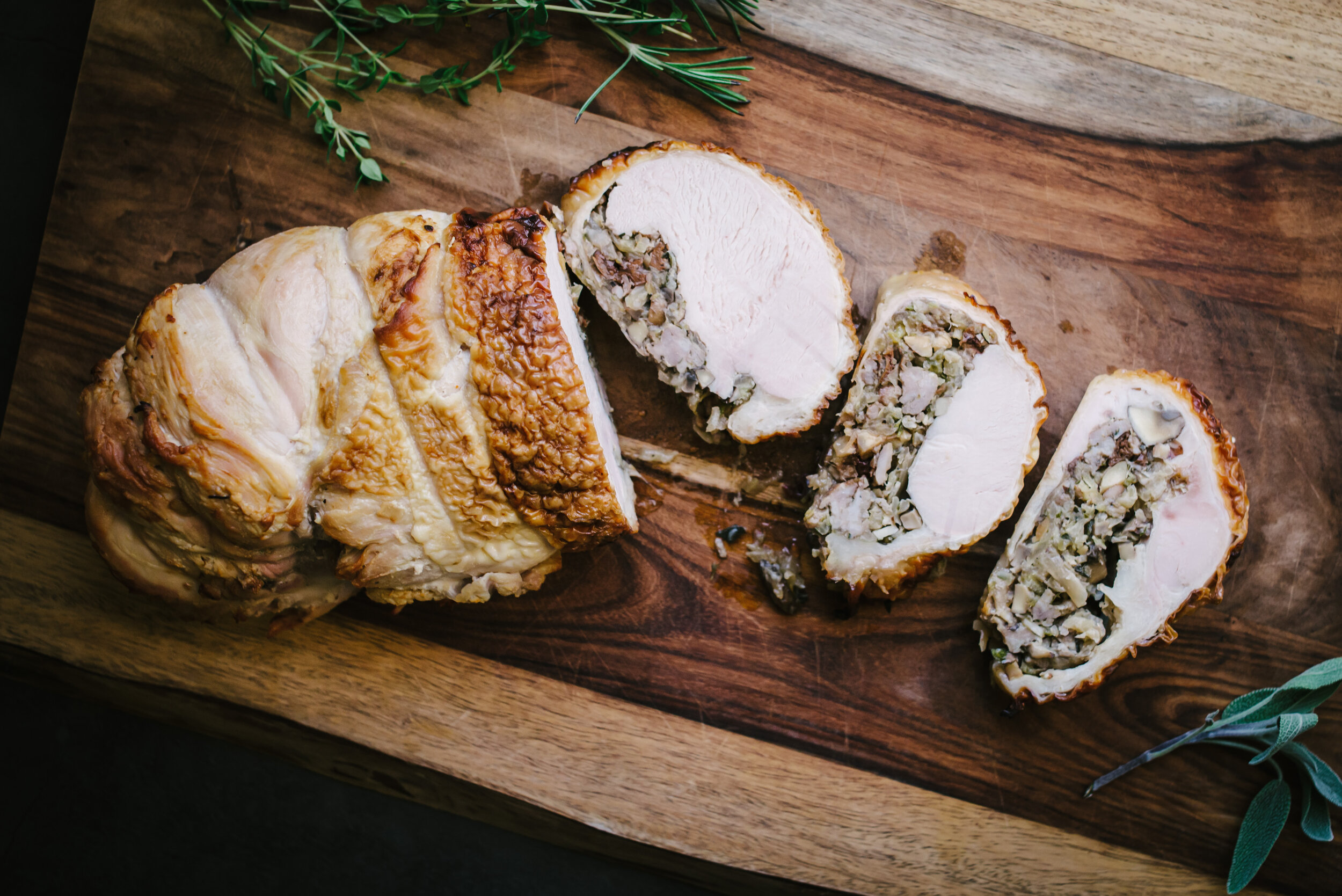Black-Eyed Peas + Collard Greens
/Here’s the Black-Eyed Peas and Collards Greens that I made last week, I think I mentioned it in my Cornbread post, which seems so long ago. Man, these are weird times. I did some shopping yesterday morning because it’s getting so difficult to get delivery, or to get what you want, Amazon PrimeNow is really feeling it these days with low inventory, so I got my disposable gloves, sanitizer, dust mask and went to it. Well the mask didn’t work out at all, it kept fogging up my glasses and I couldn’t see. So that had to go. But I will say the majority of shoppers were really good about keeping distance. And the cashier was sanitizing everything after each customer. I brought my own bags so I had bag myself which was fine, and it felt good to be out for a bit (there is this sense of walking through a minefield, constantly cautious!) But we have groceries for a good one to two weeks and it gives me peace of mind that I don’t have to go out there for a while.
So onto Black-Eyed Peas and Collards Greens. I got the recipe from NYT Cooking. The original recipe had two pounds of black-eyed peas and two pounds of ham, so I halved the recipe, some things I left as is, like the spices, because you might need to add more water as it’s cooking and I found myself adding more spice towards the end. The recipe below makes a ton of food, at least for two people that is, but if you want to make an even bigger batch you can double the peas and ham, double the garlic, keep everything else the same and use 10 cups of water for cooking rather than 7 cups. I initially started with 5 cups of water since I halved the recipe, but it wasn’t enough to cover everything. I think the recipe is fairly forgivable in precise measurements so you can add and subtract however you like and it will be fine. We really enjoyed this dish, I hope you do too.
Black-Eyed Peas + Collard Greens
1 pounds black-eyed peas, soaked overnight if possible
1 pound smoked thick-cut bacon (or smoked ham hock)
1 teaspoon kosher salt
1 large onion, peeled and stuck with 2 cloves
1 bay leaf
1/2 teaspoon black pepper
1/2 teaspoon allspice
2 tablespoons olive oil
2 garlic cloves, minced
½ teaspoon crushed red pepper
2 pounds collard greens, cut in 1-inch ribbons (about 8 cups)
1 bunch scallions, cleaned and chopped, for garnish (optional)
Drain peas and put them in a large Dutch oven or heavy-bottomed soup pot. Add ham hock or bone (if using slab bacon, cut it into 2-inch chunks), cover with 7 cups water and turn heat to high. Add salt, onion stuck with cloves, bay leaf, black pepper and allspice.
Bring to a boil, then reduce heat to a gentle simmer. Skim off and discard any foam that rises to the surface. Simmer for 1 1/2 to 2 hours, until peas are tender (I cooked mine over 2 hours and the bacon started to fall apart, so I think 2 hours max if you’re using bacon). Throughout cooking, add water as necessary, always keeping liquid level 1 inch above surface, stirring with wooden spoon occasionally. Turn off heat. Check broth for salt and adjust seasoning. Mixture should be fairly brothy. With a pair of tongs, remove ham hock, ham bone or bacon. Chop meat and skin in rough pieces and set aside.
Put a large wide skillet over medium-high heat. Add olive oil and heat, then add garlic and red pepper and let sizzle without browning. Add collard greens and stir to coat. Season with salt and add 1 cup water, stirring to help wilt greens. Add chopped bacon and reduce heat to medium, then cover with lid slightly ajar and cook until greens are soft, about 20 minutes. Check seasoning.
To serve, put greens and meat in low soup bowls, then ladle over hot black-eyed peas. Sprinkle with scallions.
Recipe adapted from NYT Cooking













































